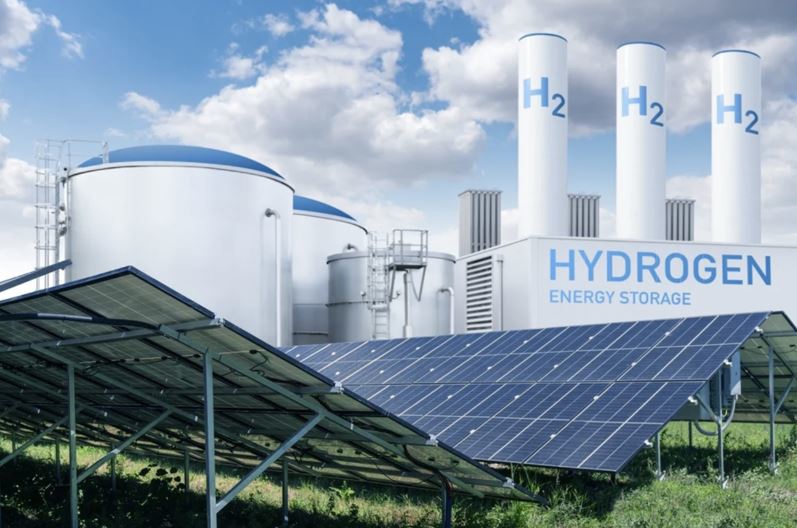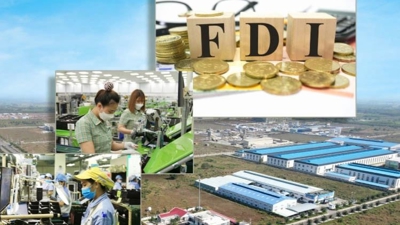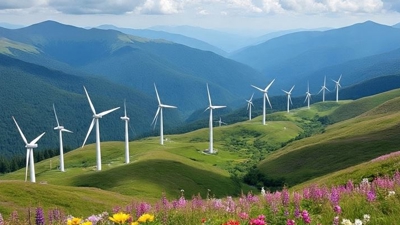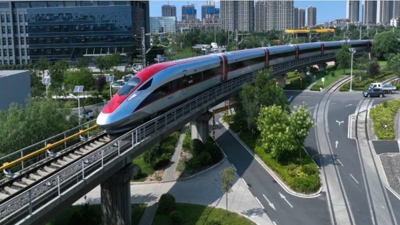Green Hydrogen on way of development in Vietnam
While recognizing the potential green hydrogen holds, Vietnam has much to do to ensure its ongoing development.

Green hydrogen plays and will continue to play a vital role in the global energy transition towards net-zero emissions. At a recent forum entitled “Realizing Vietnam’s Hydrogen Economy: From Vision to Action”, many experts agreed that amid increasingly severe climate change, resource depletion, and the global push for sustainable development, hydrogen, especially green hydrogen, is viewed as a strategic solution in energy security and emissions reduction. However, to realize its potential, the government must establish a comprehensive legal framework, offer preferential policies and research and development (R&D) support, strengthen public-private partnerships, and mobilize international assistance.
Major potential, pressing challenges
More than 70 countries and territories have now released clean hydrogen development strategies, aiming for hydrogen to account for 10-30 per cent of total energy consumption by 2050. The EU, Japan, South Korea, and China have all identified it as a future energy pillar.
Mr. Nguyen Van Thao, Head of the Technology Department at the Thermal and Nuclear Power Consulting Center under the Institute of Energy, within the Ministry of Industry and Trade (MoIT), believes Vietnam holds considerable potential to develop green hydrogen. By 2050, hydrogen demand is projected to grow rapidly across key sectors, including oil and gas, chemicals, power, transportation, and steel.
Vietnam’s production potential is equally promising. It’s been estimated that the country could produce between 57.3 and 60 million tons of hydrogen annually, leveraging abundant renewable resources such as onshore and offshore wind and ground-mounted solar power. This output could fully meet domestic needs and also allow Vietnam to become a green hydrogen exporter to high-demand markets like South Korea and Japan.
Beyond resource availability, the Vietnamese Government has demonstrated strong political will to advance hydrogen development. Key national policies have been introduced and identify hydrogen, especially green hydrogen, as a critical component of Vietnam’s future energy mix, in synergy with solar and wind power.
Still, major hurdles remain. According to Mr. Thao, Vietnam faces a complex web of technological, infrastructural, and institutional challenges. Rapid advancements in hydrogen technology may outpace the country’s ability to adapt. Green hydrogen must also compete with more established fuel types and with global players that are further ahead in hydrogen deployment. Vietnam currently lacks a complete legal and regulatory framework to guide its hydrogen transition. Infrastructure remains underdeveloped, and the country has yet to master key technologies or secure sufficient investment and skilled talent to support the sector’s growth.
Mr. Dang Hai Anh, Deputy Director of the Oil, Gas, and Coal Department at MoIT, noted that domestic hydrogen production still relies heavily on traditional sources, namely grey and brown hydrogen from oil refining and fertilizer production, with an annual output of about 500,000 tons. Storage, transportation, and distribution systems remain extremely limited. Most hydrogen is used where it is produced, with only minimal storage capacity available for research or pilot applications.
Interest from both domestic and international investors has grown since the introduction of the national hydrogen strategy. A number of green hydrogen projects have been proposed, but most remain in the early stages of research or preparation, with no commercial operations to date.
This is largely due to the absence of a clearly-defined domestic market for green hydrogen, which is still concentrated in niche sectors like petrochemicals and fertilizer production. High upfront investment, complex technologies, and a shortage of qualified workers and infrastructure all contribute to investor hesitation. From a policy standpoint, the lack of targeted financial incentives, technical standards, and safety regulations is holding back private sector participation in what could otherwise be a major pillar of Vietnam’s clean energy future.
Clearing the path
To address the aforementioned challenges, the MoIT has proposed a series of solutions, including reviewing hydrogen projects in the National Master Plan on Energy to ensure alignment and integration, developing mechanisms to support green hydrogen development, studying the feasibility of blending hydrogen with natural gas, and piloting models such as hydrogen refueling stations and auxiliary plants.
The Ministry of Construction has been assigned to draft a roadmap for transitioning from fossil fuels to green energy in key sectors such as transportation and industry. The Ministry of Agriculture and Environment is taking the lead in implementing policies that enable businesses to access green credit, climate bonds, and international programs such as COP, JETP, and AZEC. Meanwhile, the Ministry of Science and Technology is focusing on technology transfer, workforce training, and localizing hydrogen-related equipment.
To unlock this potential, Mr. Thao emphasized the need for coordinated efforts between all stakeholders. The government must issue a comprehensive legal framework, along with incentive policies and support for R&D. Both State-owned and private enterprises should strengthen collaboration, pool resources, attract international investment, and engage global support.
Equally important is the establishment of a system of standards and certification for green hydrogen, which is a prerequisite for Vietnam’s participation in the global supply chain. According to Mr. Thao, it is essential to rapidly complete the legal framework, especially technical standards and regulations, to support hydrogen development across the upstream (production from renewable energy), midstream (transmission and storage), and downstream (end-use in transportation, industry, etc.) segments.
“In light of the government’s strong commitment to achieving net-zero emissions by 2050, green hydrogen not only serves domestic clean energy demand but can also become a strategic export sector, creating new growth momentum for the economy,” Mr. Thao said. He stressed that the key lies in broad consensus and coordinated action across the government, ministries, local authorities, businesses, international organizations, and the public. Only through joint efforts, innovation, and collaboration can Vietnam realize its vision of building a sustainable hydrogen economy - paving the way for a clean, green, and prosperous energy future.
Experts at the forum also called on Vietnam to promptly adopt appropriate policies and mechanisms to build the necessary infrastructure and value chain for hydrogen. This includes facilitating investment in clean hydrogen production projects and enhancing R&D in the sector.
For Vietnamese enterprises, building a well-defined market strategy and an appropriate business model will be crucial to success. Therefore, market research, investment site selection, and access to low-cost capital will be key to gaining competitive advantages in production and reducing related costs, thereby improving their position in both domestic and international markets.







